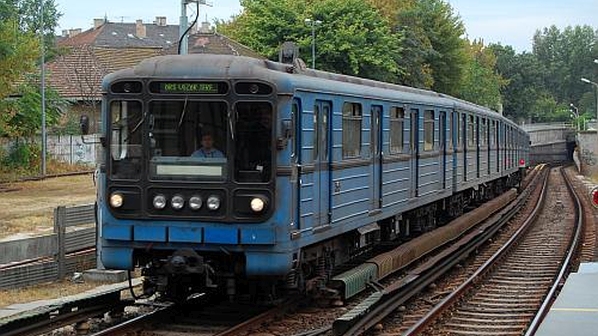The Line M5 project will create a link between the H5, H6 and H6 suburban (HÉV) lines. The line, dubbed the north-south regional rapid railway, would combine operations on the three lines into a single line, allowing through services to run from Szentendre in the north to Csepel and Ráckeve in the south.
The first tender covers planning for rerouting the northern section of the HÉV Csepel - Boráros tér Line H7. The line will be diverted to connect with the existing terminus of H6 at Közvágóhíd, with the two lines then running together to Boráros tér, before being extended to Kálvin tér to provide a connection with metro lines M3 and M4.
The existing overground alignment of H7, which runs alongside the Danube River, will be converted to green space and used for public development projects.
The southern end of H7 will be extended along the Csepel Island from Csepel to Erdősor út.
The second tender involves the modernisation of line H5, which runs from Batthyany ter to Szentendre.
Both tenders include the authorisation documents, as well as construction planning including rebuilding the right of way, superstructure, depots, signalling, station accessibility, passenger information system, parking spaces, public spaces and road junctions adjoining the stations. The project also includes rebuilding the city’s major squares affected by the works.
The project will reduce travel times from the terminus to the metro network by up to seven minutes for H7 passengers and up to 30 minutes for H6 passengers.
The third tender involves a feasibility study to determine the route of a north-south tunnel for the next stage of the project, which will provide the central link to connect the three lines.
The deadline to submit a tender or request to participate is March 23.
The HÉV lines are operated by Hungarian State Railways (MÁV) subsidiary MÁV-HÉV, and the north-south tunnel will also carry Esztergom - Kunszentmiklós-Tass MÁV-Start services.
The project was approved by the Hungarian government in November 2018, with financing expected to be provided by the European Union.
BFK estimates ridership on lines H6 and H7 is expected to more than double from the current 47,000 passengers a day to 108,000 passengers a day once the extension to Kálvin tér is completed.
BFK confirmed that a call for tenders to replace the ageing HÉV fleet will be published soon, in conjunction with MÁV-HÉV.
The idea of connecting the metro and HÉV lines in the Hungarian capital is not new. Főmterv was awarded a contract in February 2017 to review a 2013 feasibility study of a project to construct a connection between Budapest metro Line M2 and HÉV lines H8 and H9 at Örs vezér tere.
For detailed information on metro projects around the world, subscribe to IRJ Pro.

